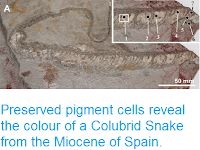Museums provide a repository for many millions of cultural artifacts and natural specimens, and are responsible for their conservation and preservation. In order to do this efficiently a record of any repairs or other work carried out on these objects should be kept, however in the case of many older specimens these records may have been lost or destroyed, or may never have been made in the first place, presenting a challenge to museum curators. Megalosaurus bucklandii was the first Dinosaur species to be formally described (excluding living Birds), by Gideon Mantell in 1827. The species was described from a number of bone fragments recovered from the Stonesfield Limestone Quarry in Oxfordshire, England, from the seventeenth century onwards. One of these fragments has subsequently been designate the lectotype for the species (modern taxonomists designate a specimen as the holotype when describing a species, any further specimens adjudged to belong to the same species as the holotype are therefore the same species; however if this holotype is lost, or no holotype was designated, usually the case with eighteenth and nineteenth century specimens, then a lectotype can be designated with the same status), a fragment of jaw obtained by Christopher Pegge of Oxford University from a quarryman in 1797. This specimen is known to have undergone repairs at some point, with parts of the specimen replaced with some form of plaster, though no record of this work is known.
In a paper presented at the IEEE International Instrumentation and Measurement Technology Conference in Torino, Italy on 22-25 May 2017, and due to be published in the proceedings of that conference, and published on the Warwick Research Archive Portal at the University of Warwick on 17 February 2017, Paul Wilson, Mark Williams, Jason Warnett and Alex Attridge of the Warwick Manufacturing Group at the University of Warwick, and Hilary Ketchum, Juliet Hay, and Paul Smith of the Oxford University Museum of Natural History at the University of Oxford, describe the results of a study of the lectotype of Megalosaurus bucklandii, made using a Nikon (Xtek) XT H 320LC μCT scanner at the Institute of Imaging, Metrology and Additive Technology at the University of Warwick
The Megalosaurus bucklandii dentary with 3D Printed Replica. (a) Photograph of the lectotype right dentary of Megalosaurus bucklandii. (b) 3D print of the lectotype dentary in a photopolymeric resin. Scale bars represent 50mm.Wilson et al. (2017).
Wilson et al. found that repair to the specimen was less extensive than had previously been thought. Two distinct materials, both thought to be forms of plaster, have been used in repair, identified as Material 1 and 2 (or M1 and M2). The first material (M1) has a distinctly lower density that the material of the specimen, but with a scattering of higher density particles throughout, and has been used on the posterior and ventral part of the jaw. The second material (M2), lacks the higher density particles and has mainly been used on the teeth.
XCT diagnosis of zones of repair and materials. (a) Medial surface of the dentary. (b) Lateral surface of the dentary. Red zones represent those of Material 1 (M1) and Green zones those of Material 2 (M2). Wilson et al. (2017).
As well as demonstrating the extent of repairs to the jaw, Wilson et al. have created a three dimensional digital model of the specimen which can potentially be used by future researchers even if it is lost or further degraded or damaged in future. They note that the methodology has the potential to be used on many other older museum specimens, and also that similar technology was used in the uncovering of the 'Archaeoraptor liaoningensis' Dino-bird hoax in 2000, and recommend that the methodology be more widely used on museum specimens.
See also...
Follow
Sciency Thoughts on Facebook.








